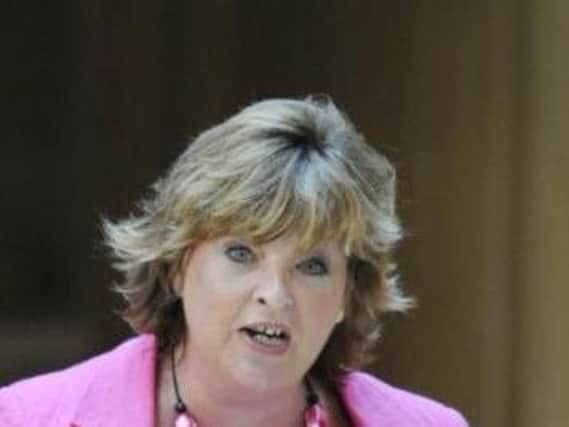Analysis: Creative Scotland's funding cuts post-mortem will be 'long and painful'


But it must have felt a lot longer than that for chief executive Janet Archer and her staff, with criticism raining down on them, day and night, ever since.
To say it was a surprise that 20 different companies were completely stripped of long-term funding weeks after it was awarded an extra £16.6 million a year from the Scottish Government is a huge understatement.
Advertisement
Hide AdCreative Scotland had been briefing for months of the grim consequences that would follow if it suffered a cut in funding in its budget settlement.
In reality, the government had been working since the beginning of last year to ensure that the quango’s regular funding pot was protected in the face of declining lottery income. Confirmed in December,
it was perceived, rightly or wrongly, as a rescue deal. Surely it was a matter of Creative Scotland steadying the ship with its funding announcement? If only it was that simple.
It has faced growing demands for funding ever since its formation in 2010 and based on all the available evidence appears to be woefully under-funded.
That may be more obvious more than ever now to the Scottish Government, which should not be allowed to escape criticism over the way Creative Scotland is going about its business. The quango was set up by the government and has to follow its policies and priorities.
The government also confusingly launched a consultation on a new national cultural strategy in the midst of Creative Scotland's decision-making process on its regular funding programme.
Advertisement
Hide AdIt is hard to avoid the conclusion that the cultural strategy, and the controversy it has stirred over alleged government interference in the arts, has not helped Creative Scotland or any of the companies affected by its funding cuts.
It also feels that there is less confidence in Creative Scotland now than six years ago, when a revolt by artists triggered the resignation of Ms Archer's predecessor, Andrew Dixon.
Advertisement
Hide AdA lot of questions have been left hanging in the air in the wake of what is by far the biggest u-turn in Creative Scotland's short history, including where the cuts will be made to fund the extra £2.6 million which has been added to the long-term funding pot.
The biggest is now much appetite there is for radical change in the cultural sector in the wake of the last few weeks.
Creative Scotland's regular funding hierarchy may appear out of date, but many companies which have traditionally relied it on are the bedrock of the sector.
Removing some completely was a high-risk strategy Ms Archer and her team should have known would backfire.
The widely-held perception is that they blundered into it. It also looked as if they had targeted companies working with children, women and disabled artists.
With criticism also heading in her direction, culture secretary Fiona Hyslop was left with no option but to intervene. It has since been a matter of not if but when.
Advertisement
Hide AdIt was highly unlikely Creative Scotland have been able to find the money to reinstate all 20 companies it had cut adrift.
The end result has left some companies celebrating, but a bitter after-taste for others.
With a full review of the process promised by Ms Archer, the post-mortem is likely to be long and painful.